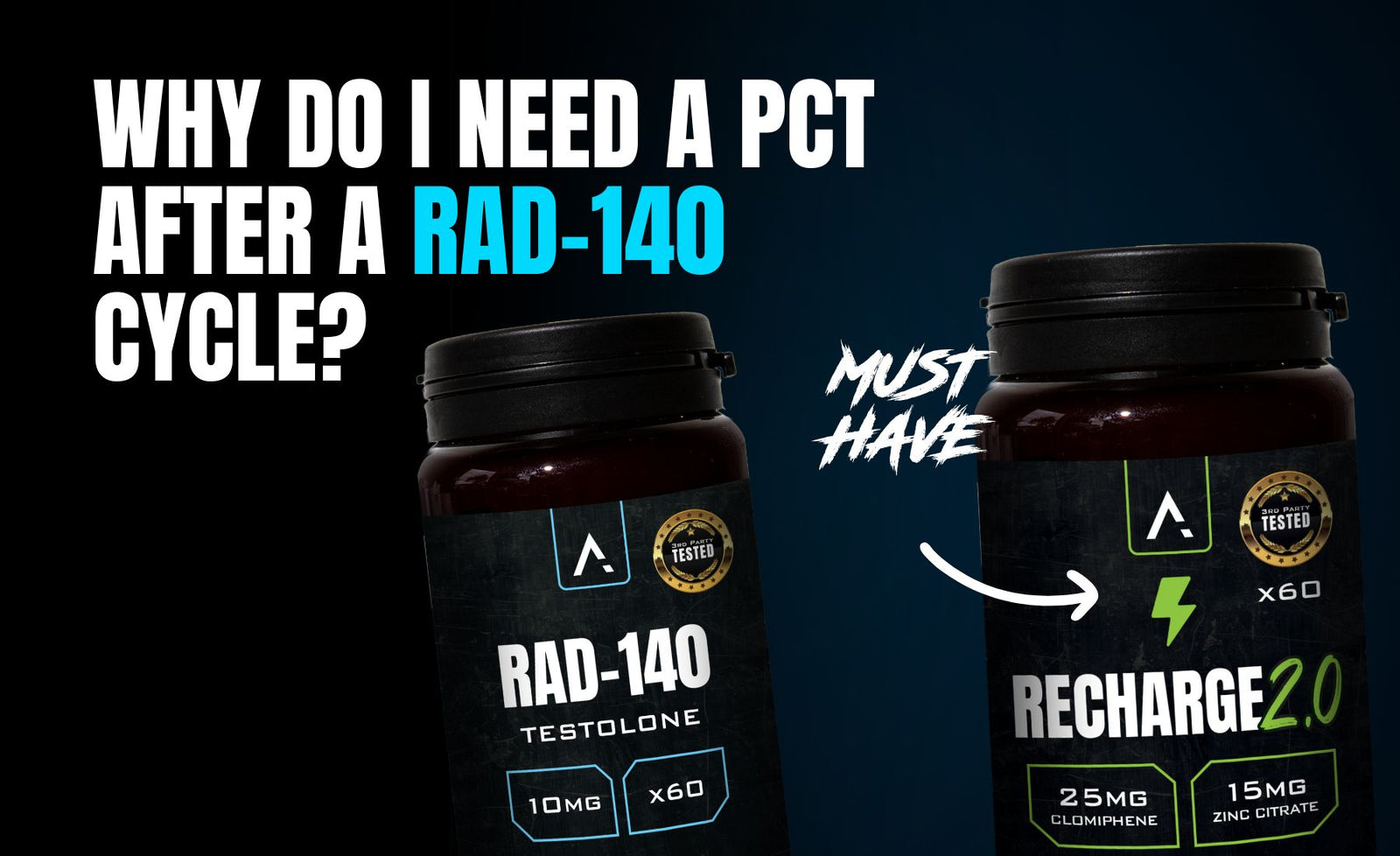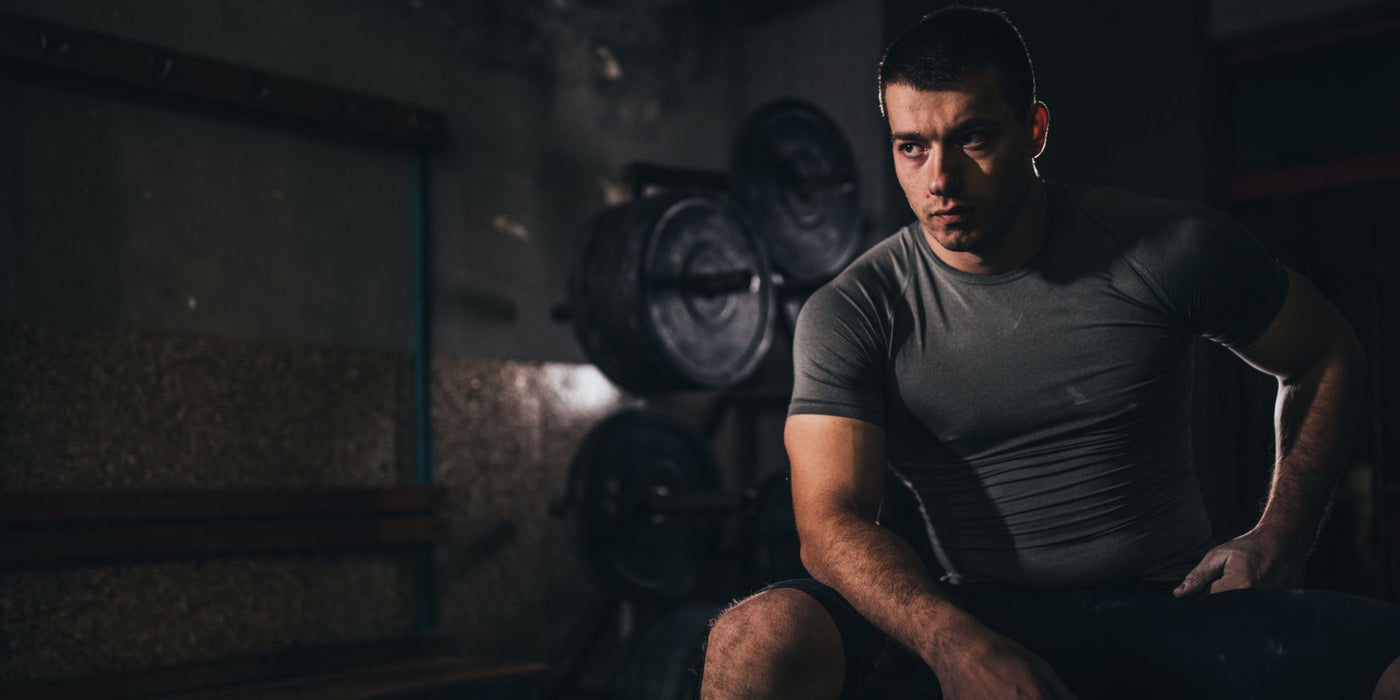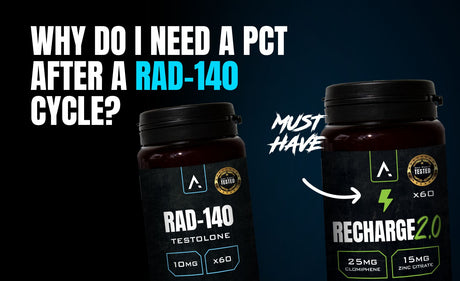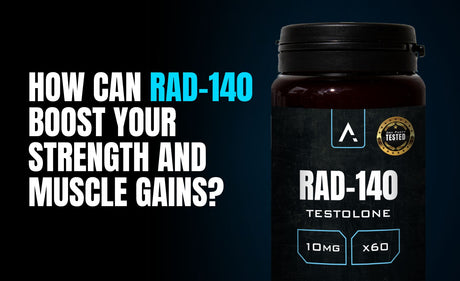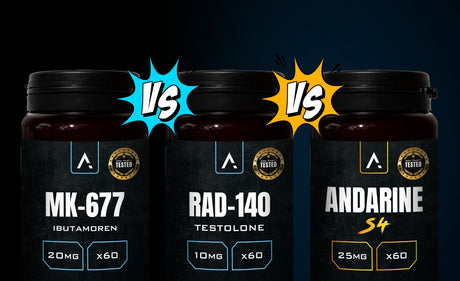Using RAD-140 (Testolone) can turbocharge your muscle gains and strength, but it can also dial down your body’s natural testosterone production. That’s where Post-Cycle Therapy (PCT) with Recharge 2.0 comes in. PCT isn’t something to dread—it’s a vital step to restore your hormones, lock in your gains, and keep you performing at your peak. Here’s why PCT is crucial after a RAD-140 cycle, how it works, and why bloodwork is non-negotiable.
What Is RAD-140 and Why Does It Require a PCT?
RAD-140 is a selective androgen receptor modulator (SARM) that binds to androgen receptors in muscle and bone, mimicking testosterone to drive 3-4 kg lean mass gains and 20-30% strength boosts in 4-8 weeks, per research. Its potency, however, can suppress natural testosterone by reducing luteinizing hormone (LH) and follicle-stimulating hormone (FSH), which signal testosterone production. Without PCT, low testosterone post-cycle can lead to muscle loss, fatigue, and hormonal imbalances.
A PCT like Recharge 2.0, with Clomiphene and Zinc Citrate, jumpstarts testosterone production, blocks oestrogen, and safeguards your gains. PCT is a science-backed tool to ensure you recover swiftly and maintain your hard-won results.
Why Is PCT Important After a RAD-140 Cycle?
Restores Testosterone Levels
RAD-140 can significantly suppress testosterone, with studies showing notable drops in users. Without PCT, recovery could take months, causing low energy, reduced libido, and muscle loss. Recharge 2.0 stimulates LH and FSH, restoring testosterone to normal levels in 2-5 weeks.
Preserves Muscle Gains
Your RAD-140 strength muscle gains depend on anabolic signalling. Low testosterone post-cycle risks catabolism, breaking down muscle. PCT maintains an anabolic state, preserving 80-90% of gains when executed properly.
Balances Hormones
RAD-140 may increase oestrogen conversion, potentially causing gynaecomastia. Clomiphene in Recharge 2.0 blocks oestrogen receptors, while Zinc supports testosterone synthesis, ensuring hormonal harmony.
Supports Overall Wellbeing
Low testosterone can lead to mood swings, tiredness, and low drive. PCT counters these, keeping you energised and focused. It also minimises risks of prolonged hormonal imbalances.
The Role of Bloodwork in a RAD-140 Cycle
Bloodwork is essential to safely navigate a RAD-140 cycle and PCT, offering clear insights into your hormone levels and health markers. Key tests include:
- Total/Free Testosterone: Tracks suppression and PCT recovery.
- Oestradiol: Monitors oestrogen to prevent imbalances.
- Liver Enzymes (ALT, AST): Checks for strain, as RAD-140 may mildly stress the liver.
- Lipid Panel: Assesses cholesterol, as SARMs can lower HDL.
- IGF-1 (if stacked): Evaluates effects of compounds like MK-677.
When to Test:
- Pre-Cycle: Establish baselines.
- Mid-Cycle (4-6 weeks): Monitor suppression and health.
- Post-Cycle (1-2 weeks after PCT): Confirm recovery.
Use LetsGetChecked for at-home testing with code SARMS20 for 20% off your first order. Bloodwork informs PCT timing and dosage, ensuring a tailored recovery plan.
How to Run a PCT After a RAD-140 Cycle
Recharge 2.0 is designed for RAD-140 cycles, blending Clomiphene (25 mg) and Zinc Citrate (10 mg) per tablet. Standard protocol:
- Duration: 5 weeks.
- Dosage: 2 tablets daily (50 mg Clomiphene, 20 mg Zinc) for 2 weeks, then 1 tablet daily (25 mg Clomiphene, 10 mg Zinc) for 3 weeks.
- Timing: Start PCT 1-2 days after your last RAD-140 dose, given RAD-140’s ~60-hour half-life.
Clomiphene boosts LH and FSH to restart testosterone, while Zinc supports hormonal health. Consult a professional to adjust based on bloodwork results.
Tips for a Successful RAD-140 Cycle and PCT
- Nutrition: High-protein (1.6-2.2 g/kg body weight) to preserve muscle; healthy fats to aid hormone production.
- Training: Maintain heavy lifts during PCT to signal muscle retention, but lower volume to avoid overtraining.
- Cycle Length: 8-12 weeks to balance gains and suppression risks.
- Bloodwork: Use LetsGetChecked (code SARMS20) for pre-, mid-, and post-cycle checks.
- Cycle Breaks: Avoid skipping PCT or extending cycles, as this increases suppression risks.
Considerations
Human data on RAD-140 is limited; preclinical studies dominate. Side effects may include suppression, fatigue, or mild liver strain. Bloodwork ensures early detection of issues. PCT with Recharge 2.0 is critical, but professional guidance tailors it to your needs.
Protocol
- RAD-140: 1-2 capsules (10 mg) daily, morning.
- Cycle: 8-12 weeks.
- PCT: Recharge 2.0 (2 tablets daily for 2 weeks, then 1 daily for 3 weeks), starting 1-2 days post-cycle.
Ready to Maximise Your RAD-140 Gains?
Wanna lock in your muscle and strength post-cycle? Power up with RAD-140 and Recharge 2.0 from APH Science, and track recovery with LetsGetChecked—use code SARMS20 for 20% off bloodwork!
Disclaimer: The products discussed are for research purposes only and not for human consumption. Do your research and consult a professional before use. APH Science is not responsible for misuse.
